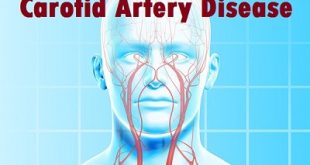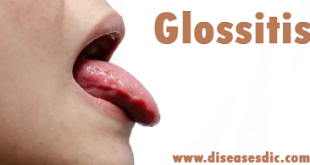What is Castleman Disease?
Castleman disease (CD) describes a group of rare disorders that involve enlarged lymph nodes and a broad range of inflammatory symptoms and laboratory abnormalities. The lymph nodes, and the cells that reside in them (lymphocytes and stromal cells), are an integral part of our immune system that help us fight invading organisms and cancer. In a healthy individual, the cells of the immune system become activated to fight off invading organisms or cancer and then return to a surveillance mode. In CD, the cells of the immune system become hyperactivated, overproduce cytokines and other inflammatory compounds, and fail to return to a surveillance mode.
Approximately 4,300-5,200 cases of CD are diagnosed in the US each year; CD can occur in people of any age, gender, or ethnicity. All forms of CD involve a constellation of microscopic abnormalities in the lymph node tissue that can be observed following a lymph node biopsy. Whether it should be considered an autoimmune disease, cancer, or infectious disease is currently unknown. The symptoms, causes, and treatments vary greatly for each subtype of CD.
Epidemiology of Castleman Disease
The epidemiology varies among its subtypes. Multicentric Castleman disease (MCD) is slightly more common in males, whereas unicentric Castleman disease (UCD) shows no gender preference. The average age of diagnosis for UCD patients is typically younger (in the fourth decade) compared to MCD patients (in the sixth decade), although CD can affect individuals of all ages, including children. No known risk factors exist for UCD, POEMS-MCD, or idiopathic MCD (iMCD). However, immunocompromised states, especially HIV infection, pose a primary risk for HHV8-associated MCD, with virtually all HIV+ MCD patients having this subtype.
The estimated annual incidence of UCD and MCD in the United States is around 4300 to 5200 cases, but some studies suggest a lower incidence. HHV8-MCD recognition has increased in the combination antiretroviral therapy era, with an incidence of 5.3 per 10,000 patient-years in a large prospective database of HIV+ individuals. Additional risk factors for HHV8-MCD include country of origin, consanguineous parentage, thymoma, chronic viral hepatitis, organ transplant, and men having sex with men.
Types of Castleman Disease
It is currently classified as unicentric or multicentric based on how many regions of your body have enlarged lymph nodes. The differences between unicentric and multicentric Castleman disease are important because each type requires different treatments.
Unicentric Castleman disease (UCD)
Unicentric Castleman disease (UCD) or localized Castleman disease causes enlargement of one or more lymph nodes in one area (region) of your body. The causes of UCD are unknown.
Multicentric Castleman disease (MCD)
It causes lymph node enlargement in multiple regions of your body. There are three categories of MCD: POEMS-associated MCD, HHV-8-associated MCD and idiopathic MCD.
- POEMS-associated MCD: POEMS is a rare blood disorder that sometimes accompanies MCD. POEMS gets its name from its associated signs and symptoms. They include polyneuropathy, organomegaly, endocrinopathy, monoclonal plasma cell disorder and skin changes.
- HHV-8-associated MCD: Human herpes virus-8 (HHV-8) is a common virus. Most people who have it don’t get sick. You’re more likely to have HHV-8-associated MCD if you’re HIV positive or if you have another condition that makes you more susceptible to infections (immunocompromised).
- Idiopathic MCD (iMCD): The most common form of MCD is idiopathic. “Idiopathic” means that its causes are unknown.
There are three types of iMCD:
- iMCD associated with TAFRO: TAFRO syndrome sometimes accompanies iMCD. TAFRO gets its name from its associated signs and symptoms, including thrombocytopenia (low platelets), anasarca (swelling from fluid build-up), fever, renal (kidney) dysfunction and organomegaly (enlarged spleen or liver).
- iMCD with idiopathic plasmacytic lymphadenopathy (iMCD-IPL): People with IMCD-IPL may have too many platelets in their blood (thrombocytosis), and their white blood cells may make too many proteins called antibodies.
- iMCD, not otherwise specified (iMCD-NOS): iMCD-NOS has unknown causes and isn’t associated with TAFRO or POEMS.
Pathophysiology
Pathogenetically, plasma cell Castleman disease correlates with the overproduction of IL-6 and overexpression of IL-6 receptors that lead to the proliferation of B lymphocytes, vasculogenesis, resulting in a series of systemic symptoms such as fever, anemia, hypoproteinemia, and proteinuria. In some cases of mixed CD, IL-6 increase also is found to favor hepcidin production from the liver that can cause iron-deficiency anemia.
Nontypical plasma cell populations with limited light chains in Immunoglobulin G (IgG) and Immunoglobulin A (IgA) can be seen. The genome of the human lymphotropic virus HHV-8 in HHV-8 associated CD encodes a viral analog (vIL)-6 of IL-6 that further stimulates angiogenesis, hematopoietic and lymphocytic activity.
Symptoms of Castleman Disease
Symptoms depends on which type of CD you have.
With UCD, you may not have symptoms. Or you might notice a bulge from the hard growth in the lymph nodes near your neck or under your arms.
When UCD causes growths in the lymph nodes in your chest or belly, you may not feel the swelling. But those enlarged areas might bring on other symptoms. A growth in a lymph node in your chest could lead to:
- Trouble breathing
- Wheezing or coughing
- Feeling of fullness in your chest
If the lymph node growth is in your belly, you may have:
- Trouble eating
- Feeling of fullness in your stomach
If you have MCD, you may have some of the same symptoms as UCD. You might also notice things like:
- Fatigue
- Fever
- Loss of appetite
- Rashes
- Sweating, especially during the night
- Weak or numb hands or feet
- Weight loss
MCD can also cause swelling or damage to things like your liver, kidneys, bone marrow, or spleen. You might have low levels of red blood cells (hemolytic anemia) or large amounts of things called immunoglobulins in your blood (your doctor might call this hypergammaglobulinemia). You may be more likely to get serious infections because your body can’t fight them.
Causes of Castleman Disease
CD is a rare and complex condition with various subtypes, and the causes are not fully understood for all of them. The specific causes of each subtype of Castleman disease are as follows:
Unicentric Castleman Disease (UCD)
The cause of UCD is not well-defined, but it is thought to be related to an abnormal or exaggerated immune system response. The overgrowth of lymphoid tissue in a single region of the body characterizes UCD.
Multicentric Castleman Disease (MCD)
The causes of MCD can be different depending on the subtype:
- Idiopathic Multicentric Castleman Disease (iMCD) – The exact cause is unknown. It is believed to be related to dysregulation of the immune system, possibly triggered by an unknown viral infection or inflammatory process.
- Human Herpesvirus 8 (HHV-8) – Associated Multicentric Castleman Disease (HHV-8 MCD): HHV-8, also known as Kaposi’s sarcoma-associated herpesvirus (KSHV), is strongly linked to this subtype of MCD. Individuals with weakened immune systems, such as those with HIV infection or organ transplant recipients, are at a higher risk of developing HHV-8 MCD.
- POEMS (Polyneuropathy, Organomegaly, Endocrinopathy, Monoclonal protein, and Skin changes) – Associated Multicentric Castleman Disease (POEMS-MCD): POEMS syndrome is a rare paraneoplastic syndrome that can be associated with MCD. It is believed to be related to an underlying plasma cell disorder.
The exact mechanisms triggering the abnormal immune response or the viral activation in MCD are still under investigation, and more research is needed to fully understand the causes of Castleman disease. As of now, there are no known preventable risk factors for most subtypes of Castleman disease, and the majority of cases occur sporadically without any clear environmental or lifestyle-related factors associated with their development.
What are the risk factors?
CD, also known as angiofollicular lymph node hyperplasia, is a rare and complex disorder of the lymphatic system. The exact cause of CD is not well understood, but several risk factors have been identified that may increase the likelihood of developing the condition. These risk factors can be divided into two main types: immunodeficiency-related and HHV-8-related.
Immunodeficiency-related risk factors:
- HIV/AIDS: Individuals with human immunodeficiency virus (HIV) or acquired immunodeficiency syndrome (AIDS) are at a higher risk of developing CD, especially the multicentric form. In these cases, it is often associated with human herpesvirus 8 (HHV-8) infection.
- Other immunosuppressive conditions: People with other conditions that weaken the immune system, such as organ transplantation, autoimmune disorders, or immunosuppressive medications, may have an increased risk of Castleman disease.
HHV-8-related risk factors:
- HHV-8 infection: Human herpesvirus 8 (HHV-8), also known as Kaposi’s sarcoma-associated herpesvirus (KSHV), is associated with a specific subtype of CD, known as HHV-8-associated multicentric Castleman disease (MCD). HHV-8 is also linked to Kaposi’s sarcoma and some other lymphoproliferative disorders.
Age and gender:
- Castleman disease can occur at any age, but it is more commonly diagnosed in adults between the ages of 30 and 60.
- There is a slight male predominance in the occurrence of Castleman disease.
Genetic factors:
- While the majority of Castleman disease cases are sporadic and not inherited, some rare cases may have a genetic component. Certain gene mutations have been identified in patients with Castleman disease, but their significance in disease development is still being studied.
It’s essential to note that Castleman disease is still a relatively rare condition, and many aspects of its pathogenesis and risk factors are not fully understood.
Complications of Castleman Disease
The complications of Castleman disease may depend on the type.
The two most serious ones in the unicentric type are paraneoplastic pemphigus (PNP) and lung abnormalities, such as bronchiolitis obliterans (BO). PNP is an autoimmune disease that is often fatal, while BO is a condition that obstructs the small airways of the lungs.
The main complications relating to the multicentric form of the condition include:
- Thromboembolic disorders, which obstruct a blood vessel due to a dislodged clot
- Internal organ involvement of the kidneys or liver
- Inflammatory reactions
Some of these complications can be life threatening in people with multicentric Castleman disease.
Diagnosis and tests
If symptoms or physical exam indicate that a patient might have a lymph node condition, the physician will get a thorough medical history, including details about symptoms, possible risk factors and other medical conditions. The physician will look for infection in the part of the body near the swollen lymph nodes, since infection is the most common cause of swollen lymph nodes.
According to international, evidence-based guidelines for UCD and iMCD from the Castleman Disease Collaborative Network, these tests should include:
- Lymph Node Biopsy: A doctor takes a sample of tissue from a lymph node and looks at it under a microscope to identify features of Castleman disease.
- Laboratory tests: Complete blood count, inflammation markers (CRP/ESR), and markers of organ function such as liver function tests, albumin, creatinine as well as HIV/HHV8 testing for HHV-8-associated MCD.
- Imaging tests: Tests such as X-rays and PET-CT scans allow doctors to locate enlarged lymph nodes and activity of those lymph nodes in the body.
Castleman Disease can only be diagnosed through biopsy (removing an enlarged lymph node) and examination under the microscope to identify features of Castleman disease.
Pet scan shows multicentric Castleman disease (MCD) lesions in the axillary, neck, and abdomen regions.
Treatment
Treatment depends on the type of Castleman disease you have.
Unicentric Castleman disease
Unicentric Castleman disease can be cured by surgically removing the diseased lymph node. If the lymph node is in your chest or abdomen which is often the case major surgery may be needed.
If surgical removal isn’t possible, medicine may be used to shrink the lymph node. Radiation therapy also may be an effective way to destroy the affected tissue.
You’ll need follow-up exams, including imaging, to check for relapse.
Multicentric Castleman disease
Treatment for multicentric Castleman disease generally involves medicines and other therapies to control cell overgrowth. Specific treatment depends on the extent of your disease and on whether you have HIV or HHV-8 infection or both.
Treatment options for multicentric Castleman disease may include:
- Immunotherapy. The use of drugs such as siltuximab (Sylvant) or rituximab (Rituxan) can block the action of a protein that is made in excess in people who have multicentric Castleman disease.
- Chemotherapy. This type of medicine can slow the overgrowth of lymphatic cells. Your provider may recommend adding chemotherapy if the disease doesn’t respond to immunotherapy or if you have organ failure.
- Corticosteroids. Drugs such as prednisone can help control inflammation.
- Antiviral drugs. These drugs can block the activity of HHV-8 or HIV if you have one or both of those viruses.
Prevention of Castleman Disease
there is no specific known way to prevent Castleman disease because its exact cause is not fully understood. However, researchers and healthcare professionals recommend taking general measures to maintain overall health and reduce the risk of developing certain related conditions. These steps can help support your immune system and may indirectly lower the risk of some forms of Castleman disease. Here are some general health tips:
- Practice safe sex to reduce the risk of HHV-8 transmission.
- Maintain a healthy immune system through a balanced diet, exercise, enough sleep, and stress management.
- Avoid immunosuppressive factors and minimize exposure to contagious illnesses.
- Attend regular health check-ups to detect any potential health issues early on.
- Consider HIV prevention by practicing safe sex and getting tested if sexually active.
Please keep in mind that while these steps may support overall health, there is no guaranteed way to prevent Castleman disease as its exact cause is not fully understood. If you have specific health concerns, consult a healthcare professional for personalized advice.
 Diseases Treatments Dictionary This is complete solution to read all diseases treatments Which covers Prevention, Causes, Symptoms, Medical Terms, Drugs, Prescription, Natural Remedies with cures and Treatments. Most of the common diseases were listed in names, split with categories.
Diseases Treatments Dictionary This is complete solution to read all diseases treatments Which covers Prevention, Causes, Symptoms, Medical Terms, Drugs, Prescription, Natural Remedies with cures and Treatments. Most of the common diseases were listed in names, split with categories.







